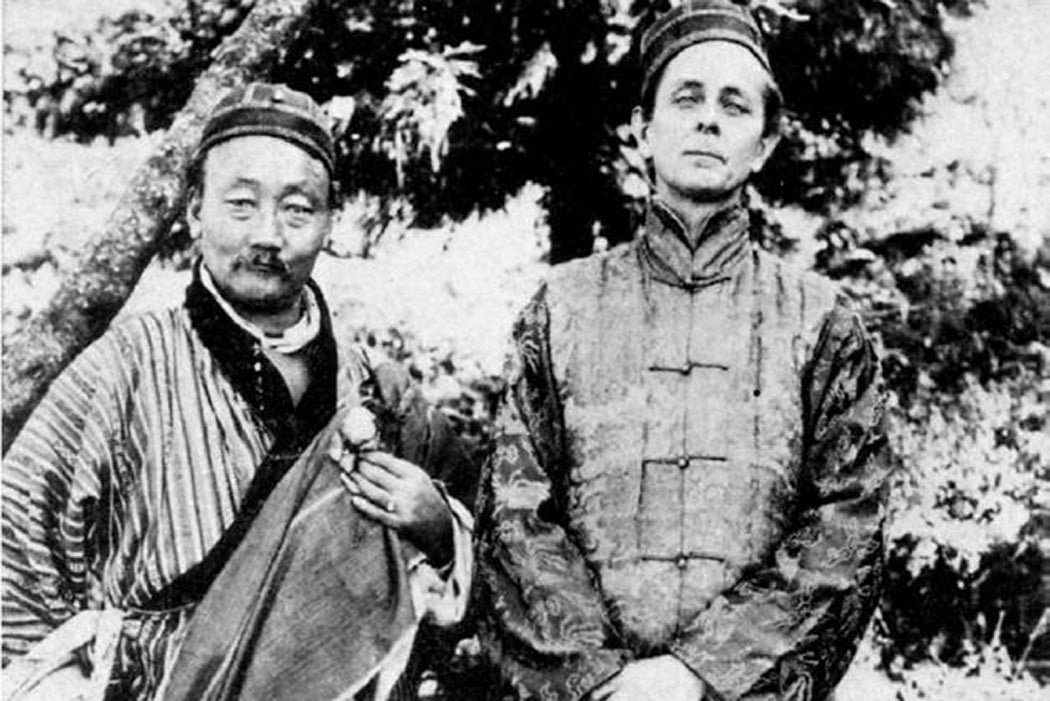If you read or watch a story featuring a tulpa—a paranormal entity created by the thoughts of an individual or a collective—you’ll probably find a mention of its origins in Tibet. But, as scholars of religion Natasha L. Mikles and Joseph P. Laycock write, the reality is more complicated.
Mikles and Laycock write that tulpas became part of modern paranormal lore after journalist and UFO enthusiast John Keel mentioned them in his 1975 book The Mothman Prophecies. He wrote that novelist Walter Gibson’s house had been haunted by a figure resembling Gibson’s character The Shadow, explaining that “the Tibetans believe that advanced human minds can manipulate these invisible energies into visible forms called tulpas, or thought projections.” Keel speculated that reports of ghosts or aliens that resembled pop-cultural depictions might actually be tulpas, created by people’s thoughts about them.
Eventually, the idea was picked up in pop culture. An episode of Supernatural, for example, featured a spirit that turned out to be a tulpa created through the power of teenagers sharing haunted house stories on a website. A character explains what happened by describing Tibetan monks creating a creature through meditation practice.
“That was twenty monks,” he says. “Imagine what ten thousand web surfers can do.”
In real life, some people used similar arguments to suggest that Slender Man, created as a spooky image by Eric Knudsen for the website Something Awful in 2009, had attained corporal form through the mental power of masses of people.
Yet, Mikles and Laycock write, the idea of a creature that can be created inadvertently by an individual or group and can rebel dangerously bears little resemblance to anything found in Tibetan tradition. The closest match is the tulku, an advanced Buddhist practitioner who manifests in human form to teach others.
Weekly Newsletter
The person responsible for introducing the “tulpa” to the world seems to be European traveler and Theosophist Alexandra David-Néel, who discussed it in her 1929 book Magic and Mystery in Tibet—a book influenced by Tibetan translator Kazi Dawa Samdup, who was himself reportedly a scholar of mystical traditions. David-Néel described tulpas as phantoms created by magicians and claimed that she herself had made one while in Tibet using “prescribed concentration of thought and other rites.”
In fact, Mikles and Laycock argue, tulpas as David-Néel described them are most similar to “thought forms” described by theosophist writer Annie Besant—entities that could take physical form for good or evil, depending on the intent of the creator. However, the authors argue that it would be a mistake to call tulpas a western creation misattributed to Tibetans. They argue that they seem to have emerged from a two-way cultural exchange between Theosophists like David-Néel and Tibetans like Samdup, the translator. In fact, Samdup used the term “thought-form” in his 1927 translation of The Tibetan Book of the Dead.
“Thus the tulpa may truly be a creature built from collective imagination,” Mikles and Laycock write, “Not only of multiple individuals, but multiple cultures exchanging ideas and terms.”
Teaching Tips
Incorporating Primary Sources:
- A copy of Alexandra David-Néel’s English-language translation (1931) Magic and Mystery in Tibet has been made available online by the National Digital Library of India.
- Read Kazi Dawa Samdup’s 1916 translation of “A Tibetan Funeral Prayer” or his 1927 translation of The Tibetan Book of the Dead (with W. Y. Evans-Wentz)
Expanding the discussion of Spiritualism:
- The London newspaper The Spiritualist began publishing in 1896. Read our overview of the newspaper before digging into back issues, shared on JSTOR courtesy of the National Library of Scotland.
- In 1913, lawyer and spiritualist Rose Levere authored A Modern Spiritualistic Classic; Scientific Proofs of Another Life. A Series of Essays Comprising Unique Lessons of Daily Life, Written by Eminent Persons after Passing from Mortal to Spirit life. Learn more about her.
- Learn how nineteenth-century women leveraged Spiritualism to find their public voices.







